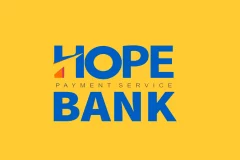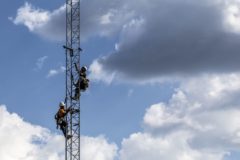Rowland Okondor heads the Product Team at BudPay. Having been in the Banking and Financial Technology sector for over 8 years, Rowland has been privileged to lead several cross-functional teams delivering innovative solutions, powering payments for businesses and consumers across Africa.
Explain your job to a five-year-old.
Let’s say you love toys and ask your uncle to build you one from scratch for your birthday in exactly two weeks. First, your uncle asks you to tell him everything you want in your toy (requirement gathering).
Then your uncle gets a group of people who can draw (Designers) to show you an image of what your dream toy looks like (User interface Designs). Your uncle then gets people who can build your dream toy (Developers/Engineers). Finally, Your uncle gathers a set of people (Quality Assurance Testers) to try out your new toy to make sure the toy is exactly how you want it.
Then your uncle shows up at your house on your birthday with your shiny new toy. Even better, your uncle keeps a journal (Roadmap) where you can write what you would like to improve on your dream toy.
That, my dear, is how your favourite Uncle becomes your favourite Product Manager.
In your experience across fintech startups and large corporations, what do you see as the biggest challenges and opportunities for financial inclusion in Africa?
One of the biggest challenges we as Africans have faced on financial inclusion is the banking penetration and the lack of banking infrastructure in rural areas which accounts for the largest number of the unbanked population. That has presented a unique opportunity for agency banking which has been taken in great stride if we are limiting financial inclusion to the basic needs of sending and receiving money with the nice-to-haves of bill payments.
This has presented another challenge/opportunity concerning the integrity of the data on the financially included population via this agency/community banking scheme since their participation is in fact in proxy via the “agents”. The next step in the evolution of this scheme is to ease regulatory barriers that hinder this population from being more active players, increase financial literacy, and set up infrastructures that aid their ascension on the ladder of financial needs beyond sending and receiving money, to saving and investing.
Looking ahead 5 years, what emerging payment technologies are you most excited about, and why?
I am particularly looking forward to payment technologies that connect Africa as a continent and ease the seamless exchange of money between countries in Africa. There is also some work on improving the current Payment infrastructures in Africa by leveraging the might of blockchain technology. Advancements in this regard hold huge promise for transaction processing speeds and success rate of financial transactions both locally and across Africa.
As a product manager, how do you balance data-driven insights with user intuition when developing financial products?
When developing financial products, it is imperative to understand that users’ expectations/intuition are largely influenced by market standards and competitive experience. However, in interacting with your products, unique patterns and behaviours are formed which are all evident in the data you gather. Here are some steps you can take in balancing data-driven insights with user intuition when developing financial products;
- Prioritise and balance by developing a healthy roadmap and decision framework that weighs the impact and feasibility of data-driven insights against intuitive ideas.
- Use analytics to validate intuition by implementing robust analytics to monitor how users interact with the product and define key performance indicators (KPIs) that align with both business goals and user satisfaction. Track these metrics to ensure that intuitive decisions are backed by positive data trends.
Having worked in both fintech startups and MNCs, what are the biggest cultural differences you’ve observed in product development approaches?
Many MNCs have the role of Product obscured in the delivery of solutions to end users. The role of the product in bridging the gap between the Business teams and relevant stakeholders in the delivery of value being completely ignored is also a peculiar occurrence in MNCs. The resultant effect of this is increased bureaucracy and a longer time to execute initiatives in the middle of a non-existent product roadmap.
Working in fintech startups has shaped my idea of products and the role of product managers in product-led companies. The teams are more nimble, the organisational goals are clearer, there is better cross-functional collaboration, and the execution of roadmapped items is a lot faster. It is no surprise that some of the most successful startups have delivered immense value with the same infrastructures owned and managed by the banks.
Beyond user acquisition and activation, what other key metrics do you focus on to measure the success of B2B fintech products?
The most important metric when building B2B fintech products beyond acquisition and activation is the success rate. The efficacy of your product will be measured against the success of carrying out financial actions on your product simply because these actions have a high impact and reward both to the user and the business.
Other notable metrics include Activity rate, Feature Utilisation, Customer Retention & Churn rate, Customer Lifetime Value, Monthly Recurring Revenue (MRR), and Customer Acquisition Cost (CAC) especially as it directly relates to Revenue Per User (RPU).
Other customer support metrics include Customer Satisfaction and Net Promoter Score (NPS), Response and Resolution Time.
Looking back at your career, can you share an instance where a product misstep led to valuable learnings?
Payment is partnerships and part of your product experience has to do with choosing the right partners to deliver the right experience. Understanding the available infrastructure in any given jurisdiction also plays a significant role in this process.
To deliver an automated onboarding experience on a Product that we had been working on, we decided to validate one of the user requirements for onboarding automatically. This would also help us streamline the pipeline to more intending users. So we removed the ability for users to complete the validation of this requirement manually.
Unfortunately, the instability of the said Infrastructure resulted in a huge dropoff in onboarding whenever there was downtime. We implemented a manual failover to help users complete this process in the event of downtime.
How do you manage to maintain a healthy work-life balance in the fast-paced world of fintech?
Working in fintech is challenging. Supporting businesses is even more challenging as some of our users have a 24/7 service promise to their customers. This means that I have to be more available than usual. However, maintaining a work-life balance is something that I am intentional about. I take time out to engage in recreational activities that keep me mentally healthy. I play and follow sports very actively. Being an extrovert also means that I am mostly outside, having fun and meeting people.





















